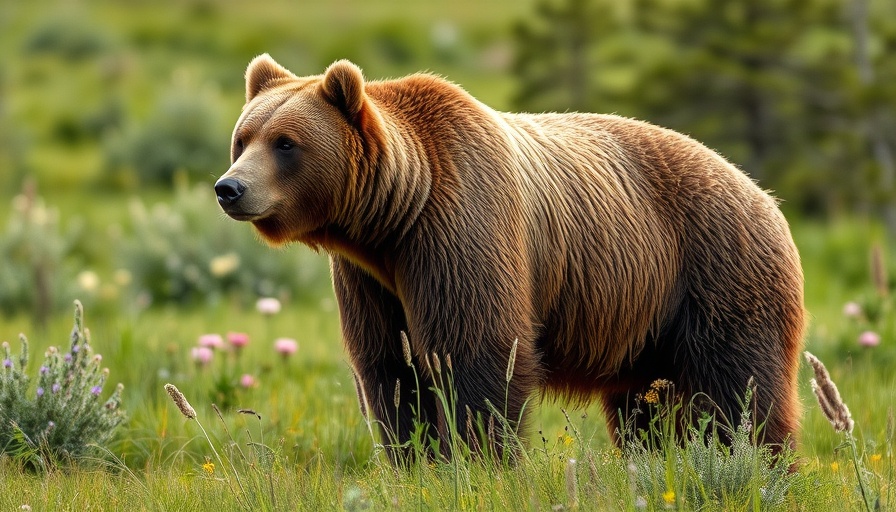
Consequences of Ignoring Wildlife Safety
In a surprising turn of events at Yellowstone National Park, the realities of flouting wildlife safety regulations came to vivid light when a tourist was handcuffed after recklessly approaching a herd of bison. This incident is a stark reminder of the inherent dangers of interacting with wild animals, especially in a cherished natural habitat that's home to diverse ecosystems. Visitors were treated to a moment of justice as they watched the man being detained, many responding with a sense of satisfaction and relief.
Understanding Wildlife Behavior: A Lesson from Yellowstone
Wild animals, like bison, are not just picturesque features in our national parks; they are powerful creatures that can act unpredictably when they feel threatened. Yellowstone's regulations emphasize keeping a safe distance of at least 25 yards from wildlife. This latest incident is a wake-up call for visitors who may underestimate the risks involved when they venture too close for a photograph or a thrill. It also underscores the crucial role that park rangers play in protecting both wildlife and visitors alike.
Wildlife Regulations: Respecting Nature's Rules
Yellowstone National Park serves as a vital educational resource, promoting responsible wildlife viewing. According to the park's official website, it is vital for visitors to know that the animals are not domesticated pets but wildlife that deserve respect and distance. Ignoring these regulations not only poses serious risks to individuals but can disrupt animal behavior, ultimately affecting the natural balance of the ecosystem.
Social Media’s Role in Promoting Awareness
The virality of the video showcasing this incident highlights an important aspect of today's society: the power of social media to inform and educate. The Instagram account 'Tourons of Yellowstone' does not just document humorous blunders but also acts as a platform for advocacy, raising awareness about wildlife safety. Comments like 'He got what he deserved' resonate with many, reinforcing societal norms concerning the treatment and observation of wildlife.
Community Perspectives: What Visitors Are Saying
The public reaction to the recent bison incident is overwhelmingly supportive of strict enforcement of wildlife laws. Many users expressed their happiness to see someone face consequences for their foolishness, with sentiments ranging from 'I love a happy ending' to more serious calls for awareness about the dangers of approaching wild animals. For those planning to visit Yellowstone, the overwhelming sentiment is clear: respect the rules for your safety and the well-being of wildlife.
Takeaway for Future Visitors
As the summer season attracts an influx of visitors to Yellowstone, it is essential to carry the lessons learned from this incident. Respecting wildlife and adhering to park guidelines not only keeps visitors safe but also ensures that future generations can enjoy these magnificent creatures in their natural habitats. Wildlife is not a spectacle to be approached casually—it is a living testament to nature that we must safeguard.
As you plan your next adventure into nature, remember that the safest and most respectful approach is to observe wildlife from a distance, allowing them to thrive in their environment. Keeping ecosystems healthy benefits everyone, and every responsible visitor contributes to the preservation of these breathtaking landscapes.
 Add Row
Add Row  Add
Add 




Write A Comment